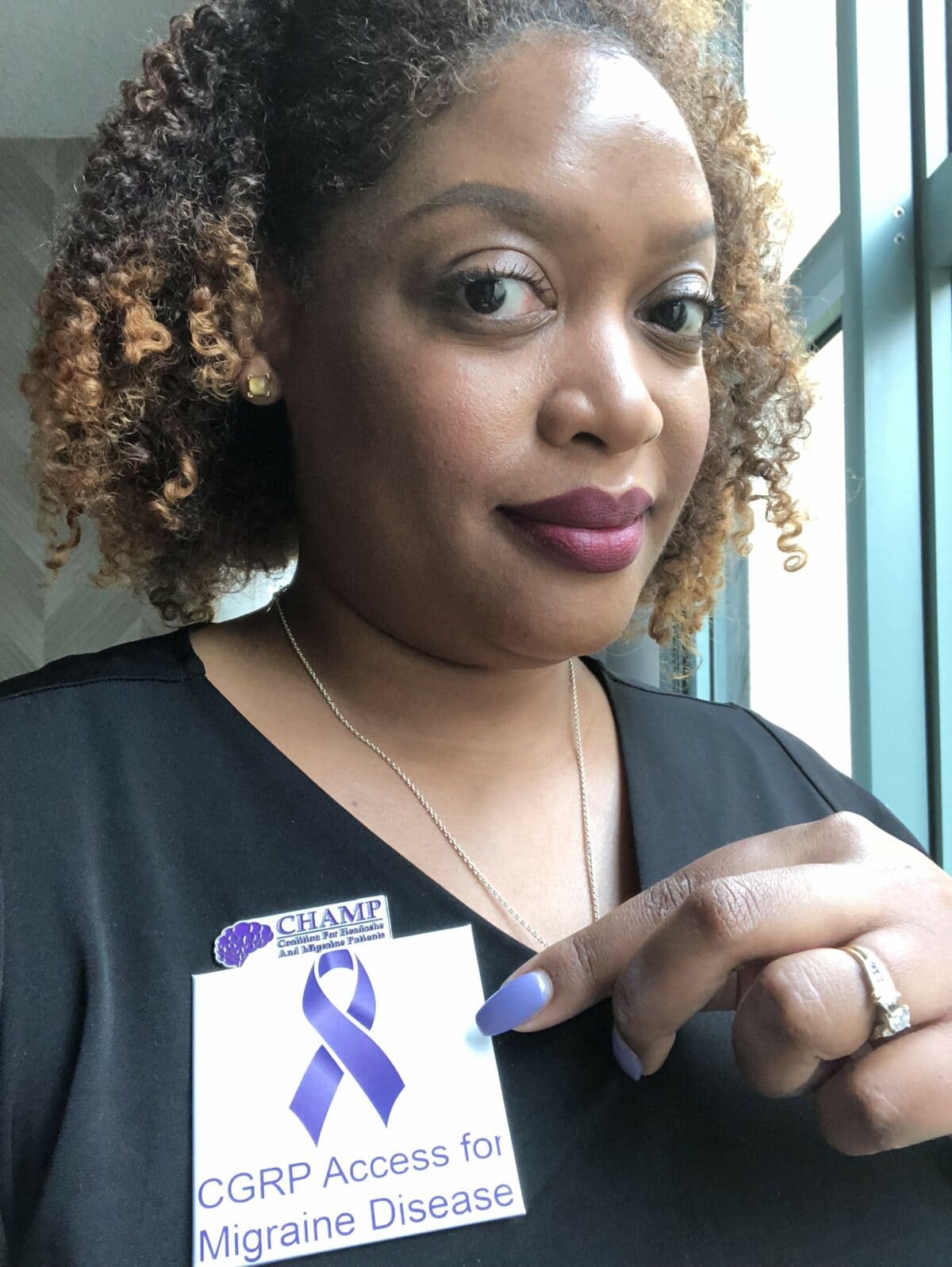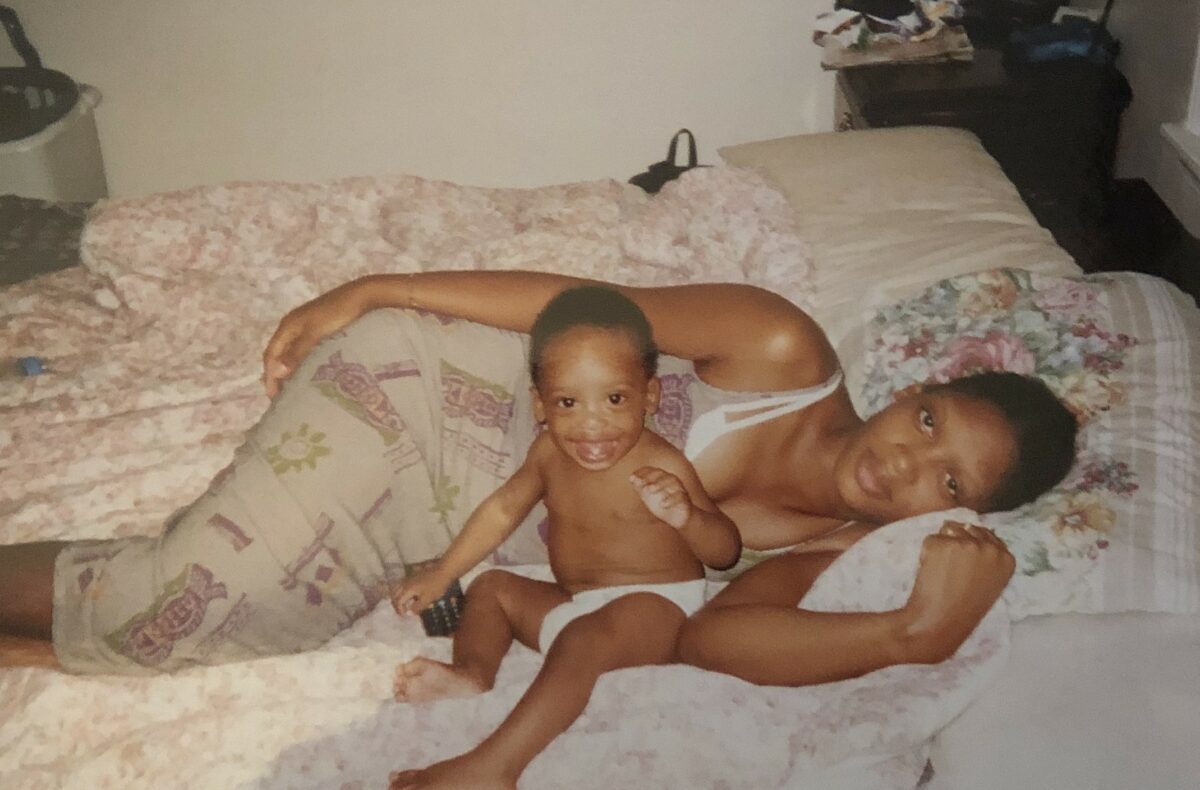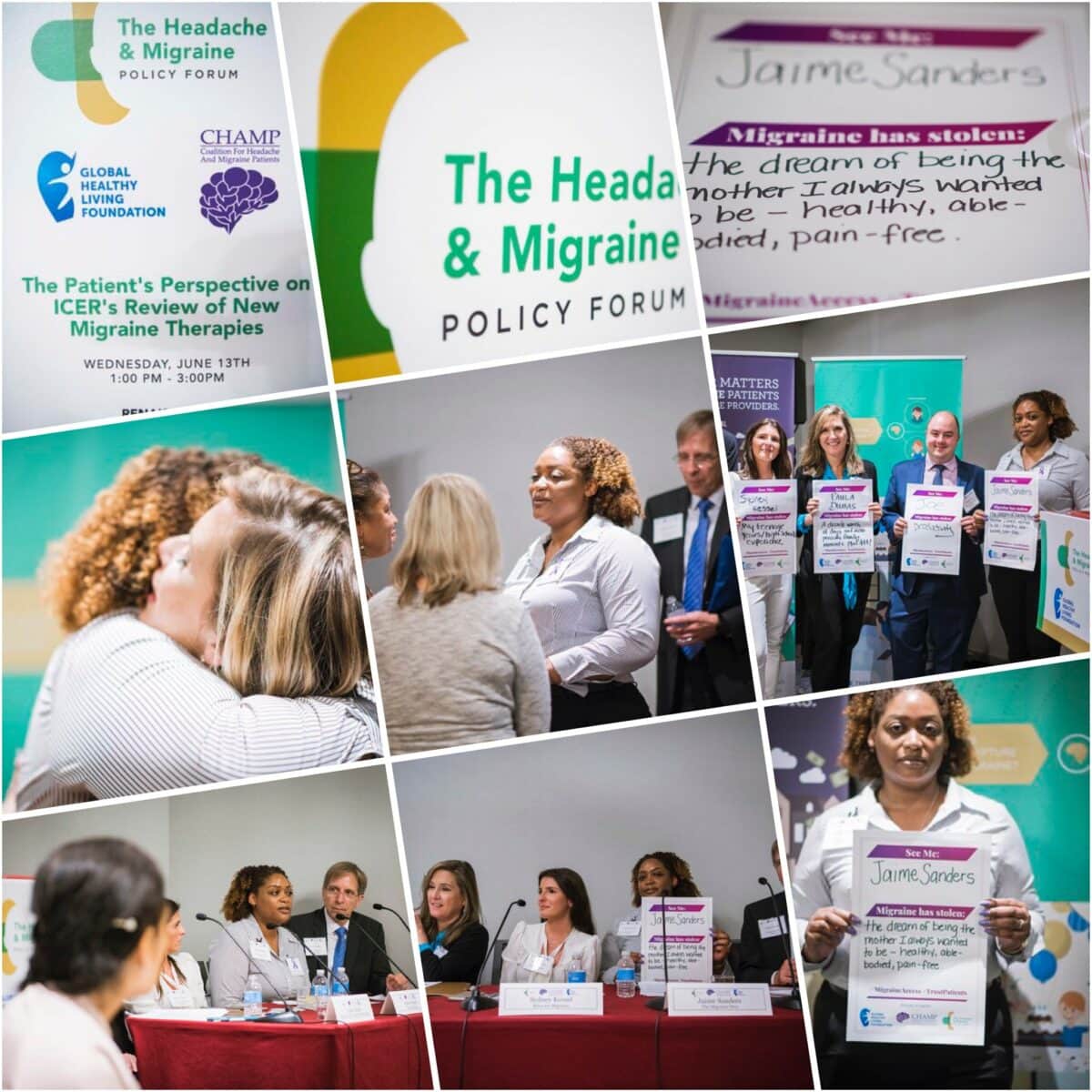STRENGTH IN EVERY STORY™
Living with Intractable Migraine
Jaime’s Story, October 2024
As told by: Fabiola Palomo
Diagnosis received: Chronic migraine without aura, Intractable migraine, Occipital neuralgia, and Trigeminal neuralgia
Symptoms: Head pain, Vomiting, Nausea, Light sensitivity, Brain fog
The severity of Jaime’s condition was present as a two-year old. Having had persisting symptoms of abdominal pain, motion sickness, and constant nausea and vomiting, she later learned that these signs were due to abdominal migraine, which is common in children.
For Jaime, such symptoms were only the beginning of a battle and journey in living with intractable migraine.
Jaime’s only momentary relief was found in taking over-the-counter medications such as ibuprofen and acetaminophen as a child and adolescent.

From Migraine to Intractable Migraine

During her third pregnancy, when Jaime was in her early 20s, she reached a turning point. “For the first time, I had migraine that lasted more than a day. And so, for me, this is completely new, it’s really scary,” she said.
“I got a referral for neurology to get an MRI scan to make sure that there isn’t anything structurally wrong, to make sure there isn’t any aneurysm or tumor.”
Jaime had expected to get a clear answer and diagnosis but was displeased when she had gotten back her test results, “The scan came back clean. And so that was a bit disheartening because there’s not much I can do about migraine, especially while being pregnant.”
This was Jaime’s first experience with intractable migraine. (Intractable, or also known as “status migrainosus” refers to experiencing a severe migraine attack that does not respond to medication and continues for 72 hours or more).
In managing her pain, Jaime felt like she was at a loss in discovering that she was allergic to acute treatments like sumatriptan and found she could not tolerate other triptans very well.
“Nothing was helping me. And so, by the time I was 30, I had chronic migraine. [I] started to become intractable… [And] because my central nervous system was constantly just on all day every day, I developed fibromyalgia.”
Given the approach she grew accustomed to when managing her pain growing up, she began to feel as though her attacks had only heightened and were at a stage of being far too deep, in minimizing her pain, “It made my disease just progress so much quicker and more resistant to traditional treatments.”
Jaime laments being intractable and questions whether she will ever live with a pain she can manage. “It requires a lot more energy than I truly have to really manage with it…I really don’t know if there’ll ever be a day where I’ll ever become just chronic again. I’ll be happy with that,” she chuckles.
“Instead of having, you know, daily head pain and having to constantly figure out when to use my meds, how to use my meds, is it going to be worth using it?… Is it going to take the edge off or is it going to kick it into high gear?” Jaime questions.

To this day, she has constantly tried different medications and ways to cope. She feels exhausted living with the uncertainty of finding a treatment that will finally be helpful or whether it will intensify her pain, “Always playing that game is exhausting,” she says.
However, with perseverance, Jaime has found effective types of care for her migraine attacks through nerve block and onabotulinumtoxinA treatments and will soon undergo ketamine infusion therapy.
Journey Towards Finding Community
Despite having a supportive and loving community, in 2011, Jaime turned to writing and began her blogging page, The Migraine Diva, where she recalls reconnecting back with her eight-year-old self.
“It was a way for me to express the way I was feeling, the isolation I was dealing with. The levels of anxiety and depression I was experiencing that I didn’t have the language for back then. I just used my words and just wrote,” said Jaime.
For Jaime, it became important for her to find community with people living with migraine who are facing the same challenges as a way to gain emotional support and reassurance, “People that understood it, that got it, that there was no judgment. That there was empathy [and] compassion.”
Soon, her blog was used as a tool to educate the public on what life was like living with this disease and help bring awareness to the condition she and others live with, “I wanted to use the blog as a platform to destigmatize migraine and headache disorders, as well as mental health disorders.”
Creating her blog has also allowed her to address subjects deemed taboo, topics she was discouraged from discussing with her family. “In my family, medical history is just not talked about, especially when it comes to mental health… I wanted to break the generational curse of not talking about these types of things and break out of that stigma.”
Sharing her journey has allowed Jaime to recognize she is not alone. More importantly, her work has brought people together to share their stories.

Despite this, Jaime has felt discouraged at times as she has been unable to see progress being made in her own life in dealing with intractable migraine.
“If I’m being honest, my role in advocacy feels a little bittersweet because I’m still in the same boat and I’m still struggling… but I’m always so happy to see other people get their lives back,” she said.
Addressing Medical Biases
Currently, Jaime has been working with nonprofits like Coalition for Headache and Migraine Patients (CHAMP), as a Diversity, Equity and Inclusion (DEI) Consultant. At CHAMP, Jaime has shifted her focus to developing a course that focuses on creating cultural humility and cultural competence in the examination process for headache and migraine care.
Through this, Jaime finds it important for patients to have a safe space to have open and non-judgmental conversations and examinations with their healthcare providers. “It applies not just for people of color, but anybody who feels marginalized and has a different experience showing up, whether you are part of the LGBTQ community, or you have a different religion… It’s just really about having those open-ended conversations with patients and letting them lead the conversation and explain their experience.”
Addressing medical biases has also been one of Jaime’s main concerns in developing her course. “As a woman living with chronic pain. My pain is dismissed. As a black woman living with chronic pain, my pain is not supposed to exist,” said Jaime.
Jaime cannot stress this idea enough and calls attention to the fact that headache and migraine impact people’s lives differently, “Not everybody has the same triggers, not everybody responds to the same medications, and everybody’s personal experience and their personal stressors, their living situation, work situation, education situation, all these things can definitely play a role.”

Passion in Helping Others
Jaime acknowledges the importance of supporting a cause like educating and bringing awareness to headache and migraine diseases and has found a more meaningful outcome out of it, “If my story relates to other people and they feel seen and validated… that’s the biggest thing I can do… I understand what it feels like to be invalidated and dismissed.”
Jaime also urges individuals to have self-compassion and reminds them that their condition does not define them, “You’re not at fault for why you’re experiencing what you’re experiencing. You’re not your migraine, you’re not your headache, you’re not your mental illness… There’s still value in your life regardless of your level of where you are on the spectrum.”
